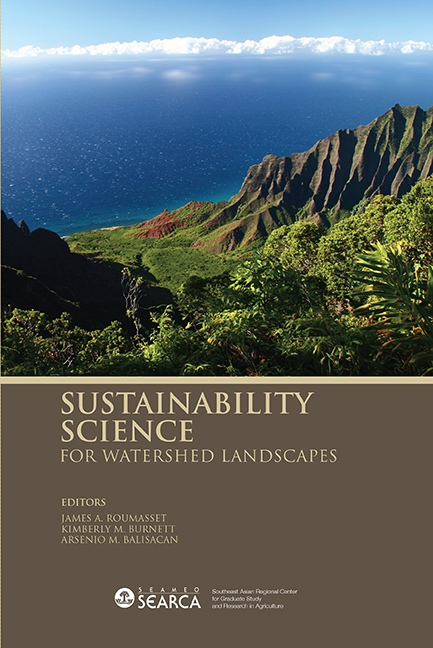14 - Sustainability Science: Overview and Directions for Further Research
from Synthesis
Published online by Cambridge University Press: 21 October 2015
Summary
FROM SUSTAINABLE DEVELOPMENT TO SUSTAINABILITY SCIENCE
As discussed in Chapter 1, there are many ambiguous, conflicting, and nonoperational images and definitions of sustainable development. Starting with Barbier's (1987) Venn diagram, there are now 178 images and possibly as many as 5,000 definitions. How then can sustainability be scientific? Is the mission impossible? In this final chapter, which draws from the 13 chapters that precede it, we suggest that sustainability science is possible and necessary to effectively deal with pressing global challenges including water scarcity, climate change, and poverty.
As detailed in Chapter 3, sustainability science not only adapts scientific knowledge to specific problems but also develops new methods for dealing with the dynamic, spatial, behavioural, and interactive complications of resource systems under pressure from humankind. By focusing on specific resource management and/or policy questions and interacting with stakeholders, research is organised to inform real-word decision-making.
To deliver on this promise, we need a policy framework built on a meaningful and operational concept of sustainable development and methods to adapt policy science to problems involving resource systems. As reviewed in Chapter 1, sustainable development literature that is compatible with policy science typically abstracts from sectoral priorities and focuses on the problem of sustainable growth.
Two promising approaches to sustainable growth were compared. Negative sustainability enjoins policy makers to conserve natural capital in accordance with dynamic efficiency and to invest in productive capital such that genuine investment is positive or at least zero. This sustainability criterion is negative in the sense of precluding what not to do. There are no policy principles to guide how and how much to conserve natural capital, nor how much to build up human and productive capital. Indeed there is ambiguity about which prices to use in summing the values of diverse capital assets.
An alternative to negative sustainability is positive sustainability, which maximises intertemporal welfare while incorporating interlinkages within the total economic and environmental system (environomy), dynamic efficiency, and intertemporal neutrality. The framework provides conditions for determining optimal depletion of natural capital and growth of produced capital.
- Type
- Chapter
- Information
- Sustainability Science for Watershed Landscapes , pp. 329 - 346Publisher: ISEAS–Yusof Ishak InstitutePrint publication year: 2010



